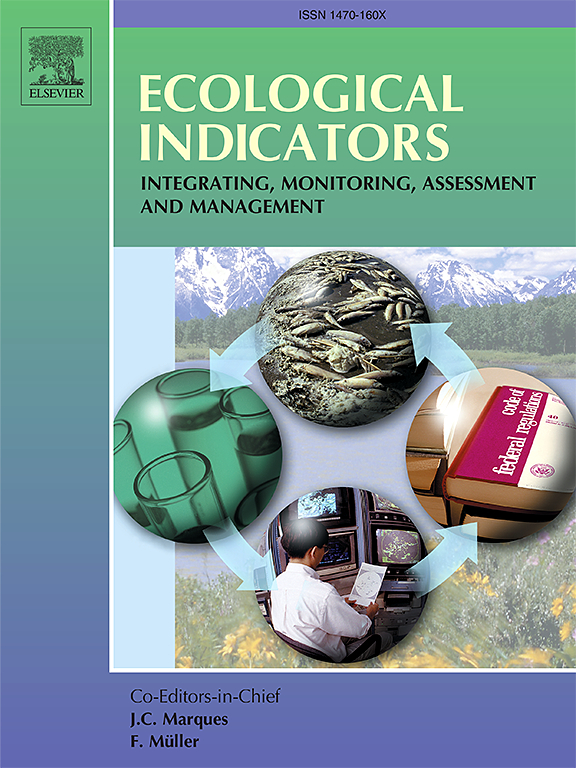Aridity-induced phenological shifts and greening trends in Mediterranean forest species: Insights from 28 years of Landsat data in southern Spain
IF 7
2区 环境科学与生态学
Q1 ENVIRONMENTAL SCIENCES
引用次数: 0
Abstract
Land surface phenology is influenced by a complex interplay of various abiotic factors, including climatic, edaphic, and topographic conditions, along with biotic factors such as competition or species composition. It is particularly important to recognize the varied phenological responses of forest species to aridity, which reflect their different adaptations to climate change. Traditional field measurements may not effectively capture these phenological changes across extensive regions. Thus, this study aims to analyse the key phenological indicators of the ten most common Mediterranean forest species using remote sensing data. Specifically, we will investigate how aridity affects these indicators in areas like Southern Spain, where aridity levels are expected to rise, and we will track their changes over time. To achieve this, we processed the maximum monthly Normalized Difference Vegetation Index (NDVI) data from 1994 to 2021, obtained from Landsat 05 and 07 satellites for 2,358 plots of the Spanish National Forest Inventory in Andalucia (Southern Spain). Evergreen species showed the Start Of Season (SOS) in autumn with maximums NDVI in winter (December-February) and the End Of Season (EOS) in late spring with minimums NDVI in summer (June-August), indicating the important effect of precipitation on the physiological response of Mediterranean vegetation. Over the 28-year analysis period, a general positive trend in NDVI (greening) and its associated phenological metrics was observed for most species. However, aridity impacts surface phenology differently among Mediterranean species, notably shortening the growth season of Scots pine and causing significant seasonal phenology shifts in Cork oak, Stone pine, and Aleppo pine. These findings suggest that time-series Landsat data enhances our understanding of forest dynamics and aridity’s effects on vegetation. Remote sensing of forest species’ responses to aridity is crucial for resilience studies and species management in global change scenarios.
求助全文
约1分钟内获得全文
求助全文
来源期刊

Ecological Indicators
环境科学-环境科学
CiteScore
11.80
自引率
8.70%
发文量
1163
审稿时长
78 days
期刊介绍:
The ultimate aim of Ecological Indicators is to integrate the monitoring and assessment of ecological and environmental indicators with management practices. The journal provides a forum for the discussion of the applied scientific development and review of traditional indicator approaches as well as for theoretical, modelling and quantitative applications such as index development. Research into the following areas will be published.
• All aspects of ecological and environmental indicators and indices.
• New indicators, and new approaches and methods for indicator development, testing and use.
• Development and modelling of indices, e.g. application of indicator suites across multiple scales and resources.
• Analysis and research of resource, system- and scale-specific indicators.
• Methods for integration of social and other valuation metrics for the production of scientifically rigorous and politically-relevant assessments using indicator-based monitoring and assessment programs.
• How research indicators can be transformed into direct application for management purposes.
• Broader assessment objectives and methods, e.g. biodiversity, biological integrity, and sustainability, through the use of indicators.
• Resource-specific indicators such as landscape, agroecosystems, forests, wetlands, etc.
 求助内容:
求助内容: 应助结果提醒方式:
应助结果提醒方式:


